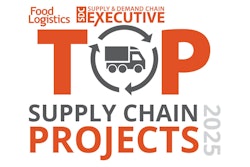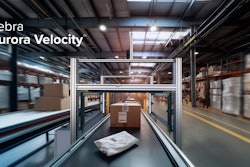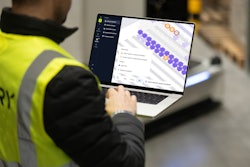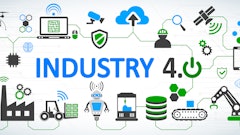
In today’s logistics environment, where numerous factors regularly impact the supply chain, businesses must leverage every tool available to enhance operational resilience. The ability to anticipate delays, optimize delivery routes and observe assets in real-time are all essential. Today, real-time data ingestion, user feedback loops, AI-based “live” mapping, and predictive estimated time of arrival (ETA) capabilities are quickly moving from buzz terms to making logistics more efficient, cost-effective, and reliable.
The role of predictive ETAs in optimizing multi-stop logistics
Reliable ETA calculations have long been a critical component of routing commercial vehicles and logistical operations. However, traditional methods often lack precision that leads to uncertainty and inefficiencies. A static ETA would be a routing-based, distance and speed estimation for each vehicle. However, as any driver knows, on the road you often encounter unexpected conditions making ETAs unpredictable.
Dynamic and predictive ETAs, powered by AI-based mapping solutions and real-time location intelligence, offer a significant improvement over static ETA calculations. Predictive ETA solutions consider many variables, such as historical traffic patterns, live congestion updates, weather conditions, vehicle type, driving behavior and rules (from trucking restrictions to low-emission zones). By leveraging machine learning models, these mapping and navigation solutions provide highly accurate vehicle ETAs that adapt dynamically as conditions change.
For multi-stop logistics, predictive ETAs are a critical decision-making tool. Coordinating deliveries across multiple destinations requires precise time estimates to avoid delays that can disrupt the entire supply chain. With reliable predictive ETAs, logistics managers can optimize stop sequencing, ensuring that high-priority deliveries arrive on time, sometimes on the fly.
For example, if a driver encounters an unexpected traffic jam, the system can immediately re-calculate an alternative route and provide an updated ETA to warehouse staff and end customers to schedule their operations accordingly. This level of precision improves customer satisfaction, reduces driver stress and enhances overall supply chain reliability. With predictive ETAs, logistics providers can communicate proactively with customers, adjust load/unloading plans, and allocate resources more efficiently. This transparency not only strengthens relationships with customers but also helps businesses mitigate penalties associated with late deliveries and missed service-level agreements (SLAs).
The growing demand for customizable and AI-powered mapping solutions
As supply chains continue to evolve, businesses require the blend of predictive ETAs and navigation capabilities that fit their unique operational needs. Customizable mapping solutions empower businesses with the flexibility to tailor maps and routing algorithms to their specific requirements. For instance, companies can define custom routes that account for vehicle restrictions, regulatory constraints or business-specific preferences, such as preferred fueling or rest stop locations. Additionally, the ability to integrate proprietary data such as private road networks, internal fleet data or specialized delivery zones ensures that mapping solutions align with an organization’s unique operational parameters.
Another critical aspect of customization is the integration of telematics and fleet management systems. By consolidating multiple data sources into a unified mapping platform, businesses can gain a holistic view of their logistics operations, facilitating smarter decision-making. Real-time dashboards, automated alerts and analytics provide actionable insights that drive efficiency improvements across the supply chain.
Moreover, customizable mapping solutions support sustainability initiatives by optimizing delivery routes to minimize emissions and fuel consumption. Companies focused on reducing their carbon footprint can leverage AI-powered mapping to implement eco-friendly logistics strategies, such as electric vehicle (EV) routing, congestion avoidance and low-emission zone compliance.
The emergence of AI-powered mapping gives fleet managers and logistics providers a transformative advantage. An AI-powered mapping platform offers the ability to integrate real-time data streams with machine learning algorithms to provide accurate, dynamic routing recommendations.
For fleet operators, real-time visibility means fewer inefficiencies and greater precision. Beyond route planning, AI-powered mapping also enhances warehouse and yard management. With precise geofencing technology and real-time location data, logistics providers can identify location data inaccuracies, gain insights into operational performance, and optimize processes right till the final meter!
The convergence of AI, real-time data analytics and predictive modeling is reshaping logistics and transportation visibility. Businesses can embrace these advanced mapping solutions to gain a competitive edge in increasingly volatile markets. By improving fleet visibility, optimizing multi-stop logistics, and leveraging customizable mapping technologies, logistics leaders can improve resilience, reduce costs, and enhance customer satisfaction.
As logistics networks continue to grow in complexity, the demand for intelligent, adaptable mapping solutions will only increase. By harnessing the power of AI-powered location intelligence, businesses can transform challenges into opportunities, ensuring that their supply chain networks remain agile and future-ready.


















